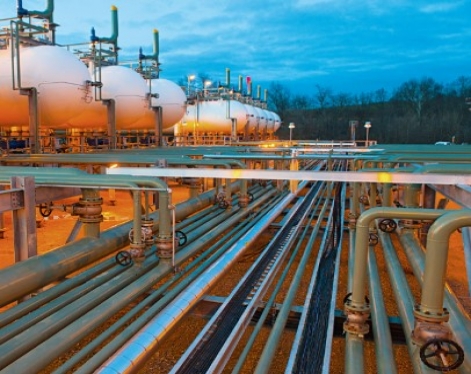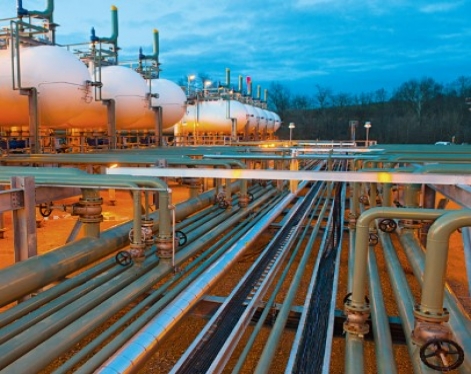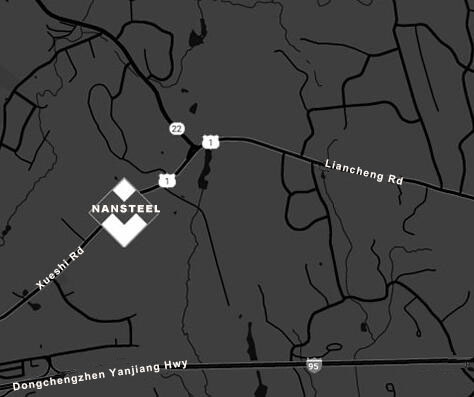As a clean and efficient energy source, natural gas transmission systems must address three core requirements: long distance, high pressure, and safety and stability. Seamless pipes, with their flawless welds, high strength, and corrosion and weather resistance, have become a core material for natural gas transmission, especially at high pressures and critical nodes. They are widely used throughout the entire process, including long-distance pipelines, urban pipeline networks, and station installations. This article will systematically analyze the selection of seamless pipes in natural gas transportation.
Selection requirements for seamless pipes for natural gas transportation
To ensure that seamless pipes are suitable for different working conditions of natural gas transportation, the selection should focus on the four core indicators of "material, specification, corrosion resistance, and low-temperature toughness" to avoid safety hazards caused by improper selection:
1. Material selection: matching pressure and temperature conditions
The material of seamless pipes for natural gas transmission needs to be determined according to the pressure level and medium temperature. The core principle is "high-strength steel for high pressure, low-temperature resistant steel for low temperature, and stainless steel for corrosive environment":
Long-distance pipeline trunk lines (pressure 6-12MPa, room temperature): Use high-strength pipeline seamless pipes (such as X80 and X90 steel) with a yield strength of ≥555MPa to meet the needs of high-pressure long-distance transportation;
Urban sub-high pressure pipeline network (pressure 1.6-4.0MPa, room temperature): choose ordinary carbon steel or low alloy steel seamless pipe (such as 20G, Q345B steel), with a yield strength ≥ 245MPa, taking into account both strength and economy;
Corrosive environment (coastal area, saline-alkali land): Choose corrosion-resistant stainless steel seamless pipes (such as 316L steel) or plastic-coated seamless pipes (with epoxy resin coating on the inner wall and 3PE anti-corrosion layer on the outer wall) to resist chloride ion and soil corrosion.
2. Specification selection: balancing pressure and delivery volume
The specifications of seamless steel pipes (outer diameter × wall thickness) need to be determined comprehensively based on "design pressure, delivery volume, and laying environment":
Outer diameter selection: The larger the transmission volume, the larger the diameter of the seamless pipe should be. For example, long-distance pipelines require large diameters (outer diameter 914-1420mm) to improve transmission capacity, while urban distribution networks use small and medium diameters (outer diameter 57-219mm) to accommodate flexible wiring.
Wall thickness selection: Reversely calculate the minimum wall thickness based on Bernoulli's formula, and reserve a 10%-15% wall thickness margin (to account for corrosion and wear). For example, for an X80 steel seamless pipe with a design pressure of 10 MPa and an outer diameter of 1016 mm, the calculated minimum wall thickness is approximately 18 mm. In practice, a wall thickness of 20 mm is selected to ensure long-term safety.

3. Anti-corrosion performance: multiple coatings ensure weather resistance
The anti-corrosion treatment of natural gas transmission pipelines requires both internal and external treatment. The anti-corrosion system of seamless pipes usually includes:
External wall anti-corrosion: The external wall of the long-distance pipeline adopts a "3PE anti-corrosion layer" (epoxy powder + adhesive + polyethylene), which is resistant to soil corrosion and UV aging, and has a service life of up to 30 years; The outer wall of the urban pipeline network adopts "epoxy coal tar anti-corrosion layer", which is low-cost, convenient to construct, and suitable for the complex laying environment of the city;
Inner wall corrosion protection: For sour natural gas (hydrogen sulfide concentration > 20mg/m³), the inner wall is coated with "epoxy ceramic coating" to resist sulfide corrosion, while reducing inner wall roughness and flow resistance. The inner wall of ordinary natural gas pipelines can be treated with "phosphating" to improve rust resistance.
4. Low-temperature toughness: ensuring safety in cold regions
In low temperature environments (temperature ≤ -20°C), the low temperature toughness (impact energy AKV) of seamless pipes is a key indicator and must meet industry standard requirements:
For seamless pipes for long-distance pipelines (such as X80 steel), AKV≥40J at -40℃;
Seamless pipes for urban secondary high pressure pipe networks (such as Q345B steel) have an AKV of ≥ 34J at -30°C;
When selecting a pipe, it is necessary to ask the manufacturer to provide a low-temperature impact test report to avoid using pipes that do not meet the low-temperature toughness standards and prevent the pipes from cracking in winter.
Read more: Advantages and disadvantages of pipeline transportation
Selection requirements for seamless pipes for natural gas transportation
To ensure that seamless pipes are suitable for different working conditions of natural gas transportation, the selection should focus on the four core indicators of "material, specification, corrosion resistance, and low-temperature toughness" to avoid safety hazards caused by improper selection:
1. Material selection: matching pressure and temperature conditions
The material of seamless pipes for natural gas transmission needs to be determined according to the pressure level and medium temperature. The core principle is "high-strength steel for high pressure, low-temperature resistant steel for low temperature, and stainless steel for corrosive environment":
Long-distance pipeline trunk lines (pressure 6-12MPa, room temperature): Use high-strength pipeline seamless pipes (such as X80 and X90 steel) with a yield strength of ≥555MPa to meet the needs of high-pressure long-distance transportation;
Urban sub-high pressure pipeline network (pressure 1.6-4.0MPa, room temperature): choose ordinary carbon steel or low alloy steel seamless pipe (such as 20G, Q345B steel), with a yield strength ≥ 245MPa, taking into account both strength and economy;
Corrosive environment (coastal area, saline-alkali land): Choose corrosion-resistant stainless steel seamless pipes (such as 316L steel) or plastic-coated seamless pipes (with epoxy resin coating on the inner wall and 3PE anti-corrosion layer on the outer wall) to resist chloride ion and soil corrosion.
2. Specification selection: balancing pressure and delivery volume
The specifications of seamless steel pipes (outer diameter × wall thickness) need to be determined comprehensively based on "design pressure, delivery volume, and laying environment":
Outer diameter selection: The larger the transmission volume, the larger the diameter of the seamless pipe should be. For example, long-distance pipelines require large diameters (outer diameter 914-1420mm) to improve transmission capacity, while urban distribution networks use small and medium diameters (outer diameter 57-219mm) to accommodate flexible wiring.
Wall thickness selection: Reversely calculate the minimum wall thickness based on Bernoulli's formula, and reserve a 10%-15% wall thickness margin (to account for corrosion and wear). For example, for an X80 steel seamless pipe with a design pressure of 10 MPa and an outer diameter of 1016 mm, the calculated minimum wall thickness is approximately 18 mm. In practice, a wall thickness of 20 mm is selected to ensure long-term safety.

3. Anti-corrosion performance: multiple coatings ensure weather resistance
The anti-corrosion treatment of natural gas transmission pipelines requires both internal and external treatment. The anti-corrosion system of seamless pipes usually includes:
External wall anti-corrosion: The external wall of the long-distance pipeline adopts a "3PE anti-corrosion layer" (epoxy powder + adhesive + polyethylene), which is resistant to soil corrosion and UV aging, and has a service life of up to 30 years; The outer wall of the urban pipeline network adopts "epoxy coal tar anti-corrosion layer", which is low-cost, convenient to construct, and suitable for the complex laying environment of the city;
Inner wall corrosion protection: For sour natural gas (hydrogen sulfide concentration > 20mg/m³), the inner wall is coated with "epoxy ceramic coating" to resist sulfide corrosion, while reducing inner wall roughness and flow resistance. The inner wall of ordinary natural gas pipelines can be treated with "phosphating" to improve rust resistance.
4. Low-temperature toughness: ensuring safety in cold regions
In low temperature environments (temperature ≤ -20°C), the low temperature toughness (impact energy AKV) of seamless pipes is a key indicator and must meet industry standard requirements:
For seamless pipes for long-distance pipelines (such as X80 steel), AKV≥40J at -40℃;
Seamless pipes for urban secondary high pressure pipe networks (such as Q345B steel) have an AKV of ≥ 34J at -30°C;
When selecting a pipe, it is necessary to ask the manufacturer to provide a low-temperature impact test report to avoid using pipes that do not meet the low-temperature toughness standards and prevent the pipes from cracking in winter.
Read more: Advantages and disadvantages of pipeline transportation









